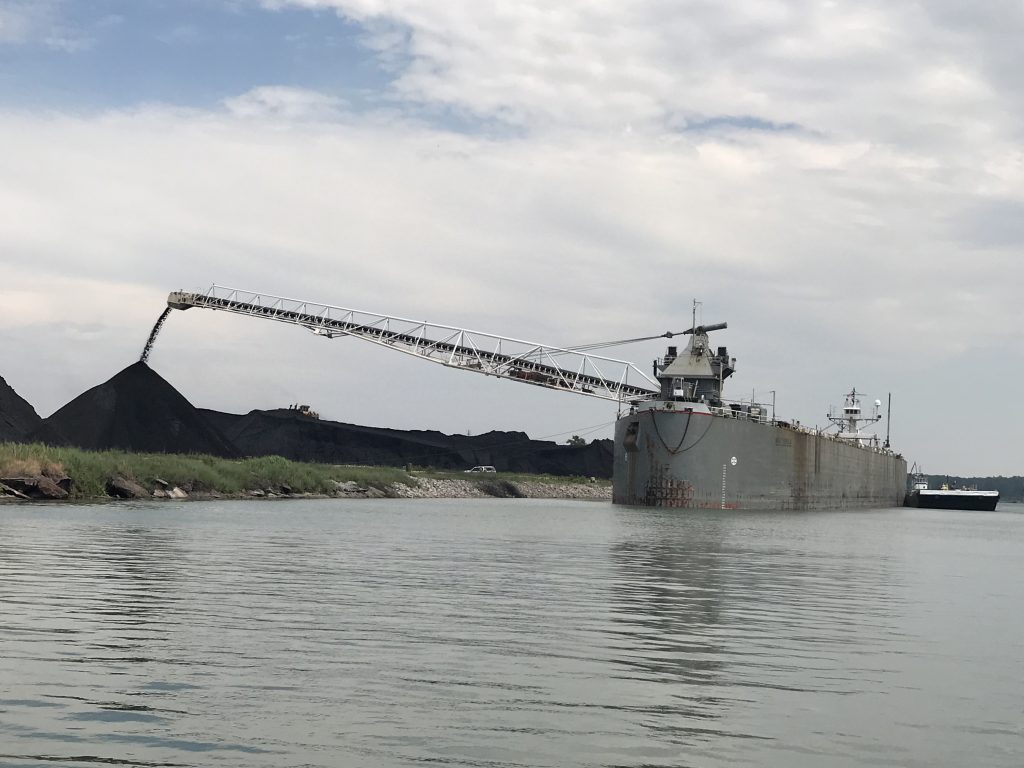Great Lakes Now exposes coal ash threat
Power companies are phasing out coal plants, but the ash they produce is still around. Great Lakes Now examines the threat coal ash poses to public health.

Coal ship on Rouge River.
Environmental groups are suing the Environmental Protection Agency for refusing to regulate older coal ash dumps near power plants. Coal ash is a toxic byproduct of burning coal to make electricity.
“There has been proof that it is contaminating groundwater.” — Great Lakes Now producer Annamarie Sysling on coal ash contamination.

While many utilities are closing their coal-fired plants, millions of tons of ash remain on sites that have already closed or are still operating.
Annamarie Sysling is a producer for Great Lakes Now. She says coal ash threatens the region’s fresh water supply.
“Coal plants are usually near water — rivers and lakes — so the coal ash is usually stored onsite near these bodies of water,” Sysling says.
She says Michigan alone has about 80 coal ash pits and storage ponds. Many lack protective lining, meaning there’s not much separating the ash from those water sources.
“There has been proof that it is contaminating groundwater,” she says.
Coal ash threatens human health.
But Sysling points out that experts don’t really know how or where coal ash is getting into drinking water.
Coal ash contains toxic chemicals such as arsenic, cobalt, lithium and boron, which could find their way into municipal water systems or private wells. She says ingesting them can cause serious damage.
“Some of them are neurotoxins that affect brain and health development,” she says. “Some are linked to higher rates of cancer, heart disease and other diseases.”
Related: Project aims to find new ways to convert river water into drinking water as pollutants evolve
Regulation has been spotty.
A 2015 federal rule requires companies that store coal ash to test groundwater and make the results public. They also have to devise plans to close ash sites in a way that prevents contamination. But Sysling says polluters often ignored that rule. She adds the government didn’t take much action to enforce the rules even before the Trump administration relaxed them. But she says things are changing under President Joe Biden.
“This past January, the EPA basically said it’s going to start taking these rules more seriously,” she says.
Coal ash can be removed or recycled.
Many companies choose to store coal ash onsite because it’s the simplest and cheapest option. Others have removed it completely. But Sysling says there’s a third option — recycling.
“It can be used safely as a major ingredient in concrete and other building materials like drywall,” she says.
Detroit Public Television will broadcast Great Lakes Now’s investigation — “Poisonous Ponds: Tackling Toxic Coal Ash” — on Wednesday, Aug. 31 at 7:30 p.m.
Listen: Great Lakes Now producer Annamarie Sysling talks about dangers of coal ash contamination
Trusted, accurate, up-to-date.
WDET strives to make our journalism accessible to everyone. As a public media institution, we maintain our journalistic integrity through independent support from readers like you. If you value WDET as your source of news, music and conversation, please make a gift today.
